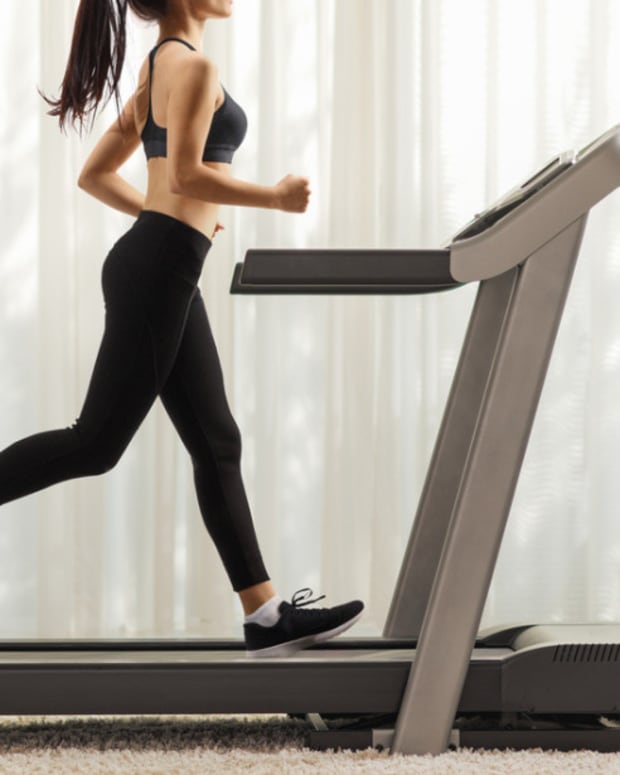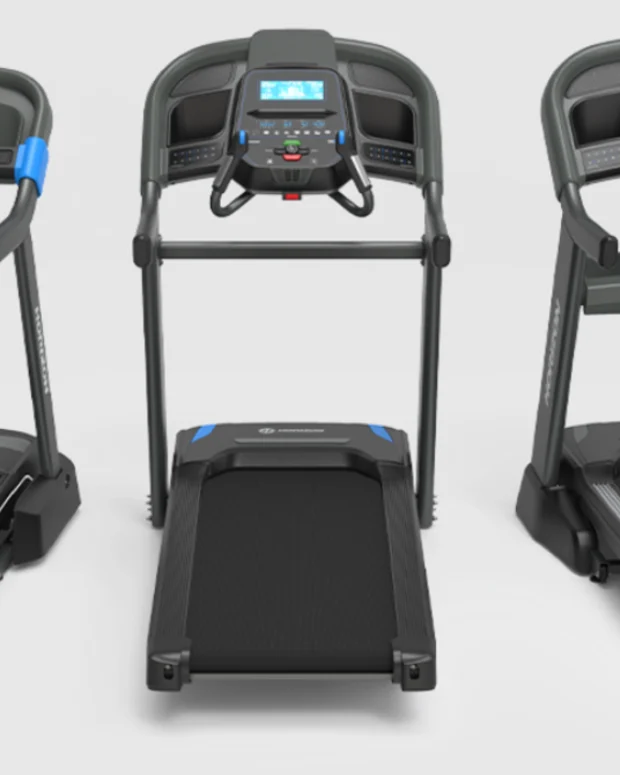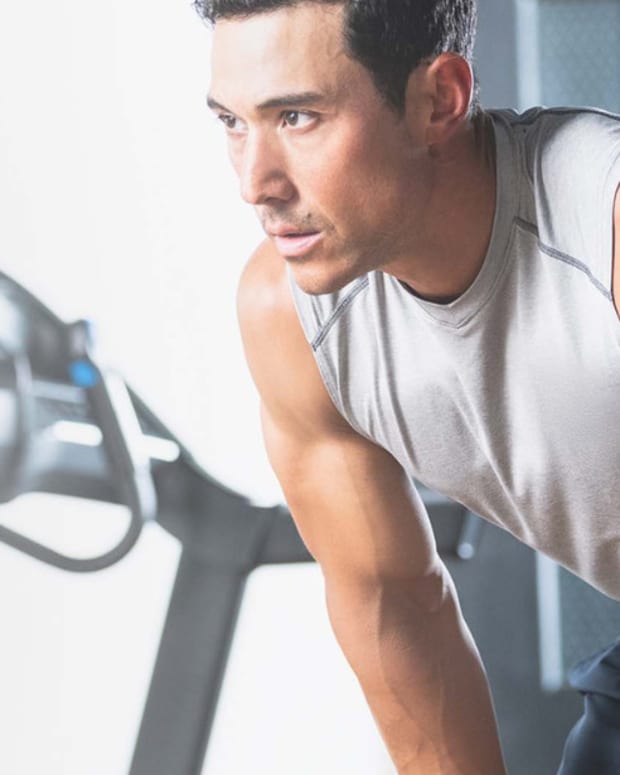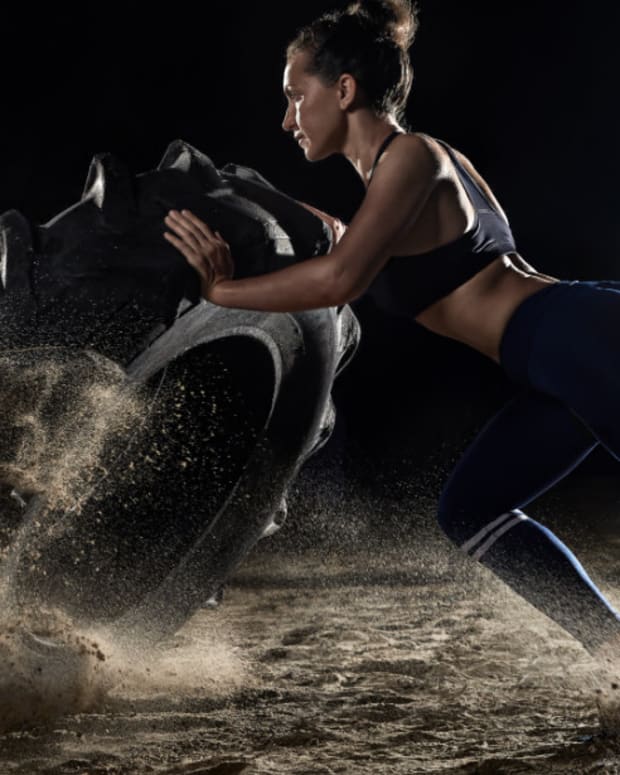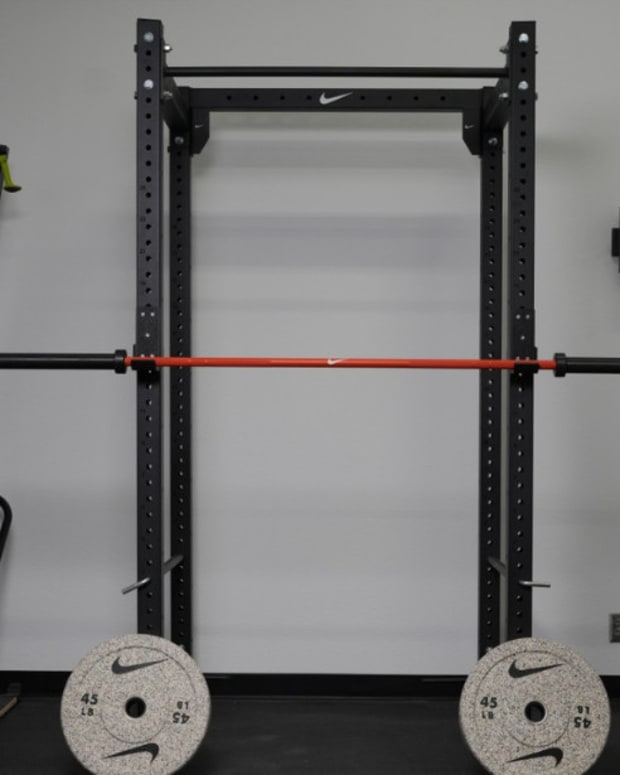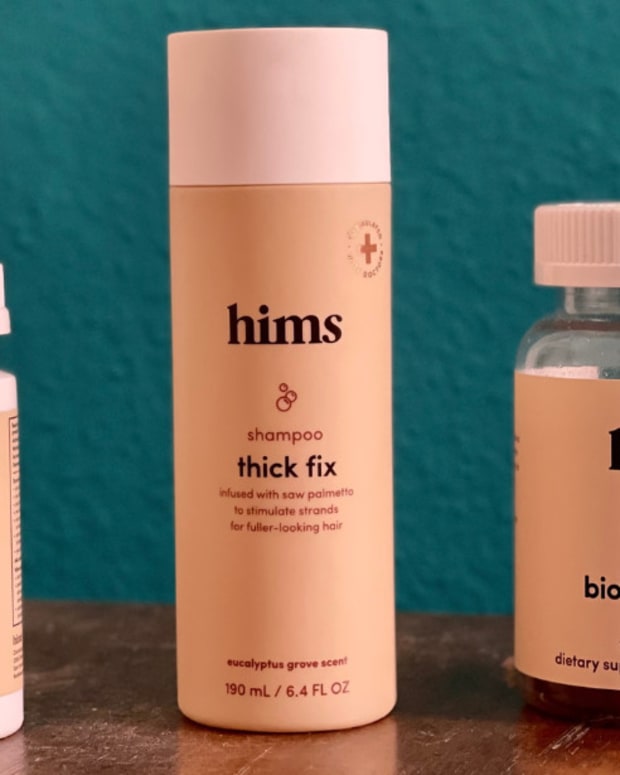The products featured in this article have been independently reviewed. When you buy something through the retail links on this page, we may earn commission at no cost to you, the reader. Sports Illustrated editorial staff are not involved in the creation of this content. Learn more here.
When it comes to fitness, everyone operates differently. Personal training apps provide you with workouts that fit your lifestyle, preferences and goals. The best personal training app can help you get stronger using methods tailored specifically for you.
We understand that some people are new to personal training and would benefit from an adjustment period that starts out with the basics, while others seek new challenges to incorporate into their already existing workout routines. We tapped Pete Nastasi, certified personal trainer, for insights on why these apps can be beneficial to your fitness routine. The apps you’ll see below were chosen based on ease of use, accessibility, variety of workouts offered and level of personalization, among other factors.
To compile the list below, we had multiple fitness enthusiasts try out a variety of workout apps and provide feedback. Our team logged hundreds of hours testing over 60 personal training apps to determine their favorites. To help you pick the right one for you, we also rated each app on a scale of 1–5, scored based on our testing methodology (which you can read about in-depth below).
Our Top Picks for Best Personal Training Apps in 2024:
- Best Overall Personal Training App: Future
- Best Personal Training App for Variety: Caliber
- Best Personal Training App for Beginners: Future
- Best Personal Training App for Cardio: Joggo
- Best Personal Training App for HIIT: Sweat App
- Best Personal Training App for Weightlifting: JuggernautAI
- Best Personal Training App for Live Fitness Classes: Peloton App
- Best Personal Training App for Strength Training: Stronger by the Day
Best Overall Personal Training App: Future
Future at a glance:
- Platforms: iOS and Android
- Ratings: 4.9/5 (Apple Store), 4.3/5 (Google Play)
- Free trial/version: No
- Personalized programs: Yes
- Best for: Strength training
- Cost: $149/month
- Our rating: 4.7/5
If you want nearly every aspect of your personal training plan to be fully customized to your preferences, check out our pick for the best personal trainer app: Future. This is one of the only apps that pairs you with a coach who creates a plan to help you achieve your goals.
Our experience
Future pairs you with a coach who will design a personalized workout plan for you. You start by taking a questionnaire that’ll match you with a coach that’s a good fit for your experience and goals. Once you’ve been matched with your coach, they’ll set up a FaceTime call to discuss your goals and how they can help you achieve them. Then they’ll create a workout plan for you. An updated workout plan will be delivered to your phone every week, and your coach will check in on your progress and be available for any questions you have.
Our tester, Ali Nolan, used Future while she was recovering from a tennis injury, and loved how her coach was able to help her build her strength back up. Her coach programmed a custom workout plan that consisted of three days a week dedicated to strength training, two days for cardio and a full day of rest. Most of her workouts in the first month used just body weight and resistance bands, but Nolan said, despite these limitations, the routines were challenging and fun and she could tell it was making a difference in her strength. “By the second month of using Future, I really started to notice changes in strength, endurance and muscle tone.”
For more information, check out our in-depth Future review.
Customization
Future is hands-down our pick as the best personal trainer app because this is a fitness app for those who want a fully customized experience. Your coach will create your workout schedule for the week with rest days included and tweak as needed or as you make progress from week to week. They’ll also analyze where you’re at in your fitness journey and help you improve in specific target areas to meet your goals.
Future gives you unlimited messaging access to your coach, so you’ll be able to check in if you’re stuck in a rut and need motivation or simply want some pointers on your form. If you’ve struggled with consistency or finding a way to incorporate exercise into your daily routine, Future will work around your schedule and help you train no matter where you are or the equipment you have on hand.
What to consider
While you don’t necessarily need a smartwatch, having a compatible Apple Watch or WearOS device to track your stats and progress will help provide your coach with insights to help better your workouts.
You don’t need a gym membership in order to use Future—in fact, your fitness coach can create workouts for you no matter what equipment you have on hand. Maybe you prefer to get your sweat on from the comfort of your own home gym and only have a set of dumbbells to work with. That’s no problem. Traveling? Your coach can create a workout plan with what equipment is available to you—they’ll sub in workouts like running and bodyweight moves to ensure you’re getting the most of each session.
Pros:
- Users get access to one-on-one coaching
- Flexible workout plans based on each individual
Cons:
- A smartwatch will help provide the best experience, and if you don’t own one this might be an added expense you don’t want
Best Personal Training App for Variety: Caliber
Caliber at a glance:
- Platforms: iOS and Android
- Ratings: 4.9/5 (Apple Store), 4.6/5 (Google Play)
- Free trial/version: Yes
- Personalized programs: Yes
- Best for: Strength training or cardio
- Cost: $200/month for personal trainer option; free version available
- Our rating: 4.5/5
What’s better for mixing it up than receiving new and personalized workouts each week? Caliber is our pick for the best personal training app for variety because it offers users a one-on-one, virtual personal training experience with diversified and tailored workouts. We like that it also provides nutritional guidance to help crush goals more quickly. You’ll match with a certified trainer who will create new workouts for you weekly, guaranteeing you’ll never be bored with your training.
Our experience
You’ll receive individualized personal training with Caliber in the form of video calls, messages, data analysis, form videos, nutritional guidance and even habit tracking. Check-ins multiple times per week ensures you stay on track and holds you accountable, plus syncing your sleep and exercise data allows your coach to follow along with your workouts and ensure you’re hitting your goals in other areas of your life, such as hours slept, steps taken and calories consumed.
One of our testers, Amanda Capritto, enjoyed the feedback her Caliber coach would send, which “gave specific feedback and goals for the upcoming week,” as well as reviewing the weight, reps and rate of perceived exhaustion (RPE) from her workouts that week.
Cory Kessler, CPT, tried Caliber for a month, noting that his first couple workouts were “a little too easy.” When he told his coach as much, adjustments were made accordingly and Kessler found his next week to be full of more challenging exercises that focused on his mobility, some of which were slightly beyond his abilities. “The next week the workouts were perfect. I didn't have one moment that week where I felt like I had a bad workout,” Kessler said.
Customization
Before you start training with this fitness coach app, you have a quick consultation where you provide some basic information about yourself, like your height, sex, weight and activity level, and fill out your goals. From there, you’re set up with a coach who matches with you based on your needs and fitness level. Your coach will monitor your stats, like your strength score, sleep, calorie input and activity level to help better fine-tune your nutrition plan and personalized workout plan.
What to consider
Though it’s not required, users will likely want a smartwatch (such as an Apple Watch, FitBit, Garmin or other brand) to help monitor their workouts, step count and sleep, which the trainers at Caliber use to make each plan.
Pros:
- Comprehensive personal training that covers multiple health elements
- Suitable for those of all levels of experience
Cons:
- Users need to be prepared to make other lifestyle changes including following a sleep schedule and nutrition plan
Best Personal Training App for Beginners: Future
Future at a glance:
- Platforms: iOS and Android
- Ratings: 4.9/5 (Apple Store), 4.3/5 (Google Play)
- Free trial/version: No
- Personalized programs: Yes
- Best for: Strength training
- Cost: $149/month
- Our rating: 4.7/5
Future is a multifaceted personal training, fitness and workout plan app that offers a real person who’s on-call to support your training and goals. Your coach will design a training plan or weight loss program, and you’ll work out on your own schedule using the equipment you can access or no equipment at all. We like that this app has a wide variety of coaches, which is especially good for beginners who need guidance in specific areas. It’s also the best app for finding a personal trainer, as it will connect you with a coach that specializes in specific workouts.
Our experience
Each week, your coach will send a training plan based on your initial discussion and respond in real-time to any questions or changes you need. Workouts are completed at your leisure, and the voice recordings scattered throughout the session from your coach offer tips and motivational cues. Future provides a video for each exercise that details form and technique. If you have questions or are unsure about something, you can take a picture of yourself or send a video to your coach to get their feedback.
Our tester, Nolan, wanted to get back into working out after a tennis injury. She was a beginner to using a personal training app, as well as new to using an app to help her recover from an injury. Her goal was to use Future to help her find ways to move her body during recovery and someone to guide her toward her goals, which were “to run two miles nonstop without pain and participate in a tennis tournament within three months.”
Nolan’s coach designed an exercise program that worked around her injury, while also tailoring the moves to the equipment (or in this case, lack of) Nolan had access to.
Her workouts began with lots of bodyweight moves and resistance band exercises, including push-ups, banded lateral raises and squats. After a few weeks, she progressed to using dumbbells and kettlebells, even buying heavier weights as her strength progressed.
Customization
While our tester, Nolan, is not a beginner to exercise, she was looking to get back into working out after a tennis injury. She wanted to use Future to help her find ways to move her body during recovery and someone to guide her toward her goals, which were “to run two miles nonstop without pain and participate in a tennis tournament within three months.”
Nolan’s coach designed an exercise program that worked around her injury, while also tailoring the moves to the equipment (or in this case, lack of) Nolan had access to. “Despite all these limitations, the routines were challenging and fun,” Nolan reported.
What to consider
If you’d like to keep your gym membership, your coach can provide workouts based on the type of gym you attend. Since you are in regular communication, they can also optimize your plan based on potential roadblocks that occur in everyday life and plan around your travel. The regular check-ins make this a great workout accountability app and ensures you stay on track with your goals. While Future does not offer nutrition-specific plans, some coaches offer guidance with food choices and share additional knowledge.
Related Post: The Best Nutrition Apps According to a Sports Nutrition Coach
Future is available for iOS and Android users, but a smartwatch is required to track your stats and progress during the workout. If you don’t have one, you can leave detailed feedback for your coach on how the workout went.
Pros:
- Great program for accountability
- Form feedback can help prevent injuries
- Workout plan based around equipment and preferences
Cons:
- More expensive than other options
- No nutrition plan
Best Personal Training App for Cardio: Joggo
Joggo at a glance:
- Platforms: iOS, Android
- Ratings: 4.5/5 (Apple Store), 4.2/5 (Google Play)
- Free trial/version: No
- Personalized programs: Yes
- Best for: Running
- Cost: $60 for two months, $89 for four months
- Our rating: 4.5/5
Joggo is a running app that uses your personal information and goals to create a customized training plan and a meal plan. This workout app is great for beginners or seasoned runners who want to follow a structured training regimen to improve their cardio. The training plan can accommodate weight loss goals and help form a sustainable running routine to help users live a healthier lifestyle. Unlike Strava, another super popular running app that’s more of a social app for tracking runs and participating in challenges, Joggo helps users push themselves and aim for longer distances, faster paces and better nutrition habits.
Our experience
When it’s time to run, the audio guidance tool coaches you through the warm-up and gives you cues throughout your workout. There’s the option to mute the audio guide if you’d like. Joggo sends reminders for upcoming workouts and about new educational content. You can also earn rewards for running streaks and other achievements.
The running plan includes stretching, warm-ups and cooldown exercises. This plan is designed to challenge your current fitness level, which is established in the initial quiz. The quiz also asks you to choose from the following goals: lose weight, improve mental health, run a distance, improve your pace or stay fit. I tested Joggo for a month and liked having goals that challenged my usual distance and pace. A week of runs would look something like this: A basic run (three miles) at a slow pace, a pace run (three or so miles at a faster pace, closer to my goal race pace), a long slow run (six or more miles, depending on the week) and a recovery run (a few miles at an easy pace).
For more information, check out our in-depth Joggo review.
Customization
Before receiving the running and meal plan, Joggo users must complete a quiz. The quiz asks about your gender, height, weight, potential health issues and other personal questions. It also inquires about your running experience, goals and lifestyle. This information helps create a custom-tailored workout program and meal plan to support your main objective.
The meal plan option is not mandatory, and you can opt out during the initial quiz. The weekly menu contains recipes for high-protein meals that include whole grains and a variety of fresh produce, which helps with muscle growth and fat loss. With this plan, you’ll have three main meals and two snacks per day. The app will ask about allergies, foods you want to avoid and foods you like to eat. Joggo also asks if you want to follow the low-fat, Mediterranean, balanced food, vegan, vegetarian, diabetes, gluten-free or GERD diet. Here are a few meal options:
- Raspberry buckwheat porridge
- Smoked salmon and avocado bagel
- Yogurt with strawberries and almonds
- Chicken broccoli quesadillas
- Bean, feta cheese and veggie salad
- Pita bread with hummus
Each recipe includes every ingredient you need and the instructions for preparation. If you come across a meal you don’t like or don’t have the ingredients for, you can select a different meal. There’s also the option to scale up the recipe to increase the serving size.
What to consider
While you run, Joggo tracks your distance, monitors your speed and has an activity history log. Your goals and workout progress help the app decide which educational content is the most beneficial. If you have a weight loss goal, the app has a weight loss tracker where you can log your weight and view your progress on a graph. There are also injury prevention and recovery programs to help you avoid some of the common ailments runners face. One thing I did not enjoy during testing was the inability to extend or shorten runs based on how I was feeling, and the fact that I couldn’t set my own pace for some of the slower runs.
The Apple Watch can track your runs and heart rate, and the audio will prompt you to slow down or speed up based on this data. At this time, the Apple Watch is the only compatible accessory.
Pros:
- Helps users progress in running speed and distance
- Meal planning is very comprehensive
Cons:
- No option to customize or alter your runs once you start them
Best Personal Training App for HIIT: Sweat App
Sweat App at a glance:
- Platforms: iOS, Android
- Ratings: 4.6/5 (Apple Store), 4.3/5 (Google Play)
- Free trial/version: No free version, one week trial
- Personalized programs: No
- Best for: HIIT, barre, yoga, bodyweight workouts
- Cost: $19.99/month, $119.99/year
- Our rating: 4/5
If you prefer home workouts to navigating gym equipment, the Sweat app is a great pick for you, especially if you want to add some high intensity interval training (HIIT) into your fitness program. HIIT has been recognized as an “alternative and more efficient protocol than moderate-intensity continuous training (MCT)” and it’s an awesome addition to any fitness plan for users who don’t have a ton of time to exercise. Created by fitness instructor Kayla Itsines, Sweat is a personal trainer app that offers a variety of workouts and routines for all fitness levels, including pregnancy and postpartum.
If you’ve ever tried Nike Training Club, Sweat is somewhat similar. I've tried both apps and felt that Sweat HIIT workouts were considerably harder than those on the Nike Training Club app, and offered more intensity in a shorter amount of time.
Our experience
Sweat does not offer live coaching, but the app does include trainer-led classes and programs to help you reach your goals. Exercises come with descriptions, video demonstrations and audio cues so you can focus on your form and alignment. We like that the trainers also offer modifications for movements so you can feel successful in your workout whether you need to level up or down.
I used Sweat for a few months when I was moving around a lot. Whether I was on the road traveling with no equipment, at home with only resistance bands or at a gym, I liked that I could find a program on the Sweat app that worked for my equipment and skill level. The HIIT workouts were pretty short, but difficult. These were awesome for those days when I didn’t have a ton of time to exercise and still wanted to get a great workout in. An example of a HIIT workout on the Sweat App would be four rounds of six to eight exercises, which differed depending on the workout. Common movements were jump squats, low to high planks, push-ups, burpees, bear crawls, bicycles; they may sound easy on their own, but the routines were pretty tough.
Staff writer Emma Witman tried Sweat too, though she found the app lackluster in several ways. “I didn’t like how you’re essentially just watching a series of GIFs of someone demonstrating a workout move. It seemed to me like you might as well be looking at a workout written in the Notes app on a phone,” she said.
She also wished the coaches were more engaging, whether via encouragement, explanation of why you’re doing certain exercises and what muscles you’re activating or notes as to how the exercise plans were drawn up to help users progress toward their goals.
Customization
When you sign into the app you’ll be asked questions about your fitness goals. Are you trying to lose weight? Gain flexibility? Rebuild fitness post-pregnancy? You’ll also be asked to select your fitness level; whether you’re brand new to working out, have worked out consistently for several months or are somewhere in between. You can also customize your plan to select where you’ll be practicing HIIT, either at home or at a gym, and with or without equipment. From there, Sweat will suggest a series of programs tailored to help meet your specific goals. One custom feature we think is great for new moms looking to rebuild core strength is that Sweat provides modifications if you had a Cesarean birth or complications during labor, and provides routines to improve your pelvic floor strength.
What to consider
Another bonus of this personal trainer app is that you don’t need access to a gym to get a good workout in. Instead, multiple high-intensity programs are designed using resistance bands, free weights and body weight, so you can perform the exercises anywhere. The vast array of programs means you can switch up the type of workouts, instructor and equipment whenever you want, keeping your fitness routine fresh and engaging.
Pros:
- Users can create their own program based on their equipment and preferences
- Accessible to anyone; gym access and equipment not required
Cons:
- Better suited to at-home workouts than using gym equipment
Best Personal Training App for Weightlifting: JuggernautAI
JuggernautAI at a glance:
- Platforms: iOS, Android
- Ratings: 4.9/5 (Apple Store), 4.8/5 (Google Play)
- Free trial/version: No
- Personalized programs: Yes
- Best for: Weightlifting
- Cost: $35/month, $350/year
- Our rating: 4/5
Although you won’t be working with an actual coach, JuggernautAI offers a high level of personalization and programming for users, designed specifically for weightlifting and building strength. Whether you’re training for a meet or competition, looking to improve your one-rep max for a lift or just want a weight lifting program that does the work for you, JuggernautAI is a solid pick that pulls its weight.
Our experience
Unlike some of the other apps on here, JuggernautAI doesn’t have actual coaches that work with users. Instead, the AI (hence the name) does all the heavy lifting, using the data that you input before, during and after training to come up with all the details for your workouts, including the rep counts, weights, frequency of lifts (think: how often you’re squatting or deadlifting each week) and even your recovery.
I’ve been using JuggernautAI for a few weeks now, and am surprised by the app. While the interface isn’t my favorite (it’s very bare-bones compared to my preferences), the workouts are no joke. The app bases your reps and weight off your REP (rate of perceived exertion) or RIR (reps in reserve), often having you do a lift at 8 or 9 RPE, which is a bit more difficult than what I might do if left to my own devices.
An example of an upper body lift day is a warm-up, overhead press, lat pull-downs, cable rows, chin-ups, bicep curls, dumbbell flyes and hanging leg raises. The reps, sets and weights all vary each workout, but there are usually two to five sets, eight or more reps and an RPE of around 7. Keep in mind that I opted for medium reps and challenging workouts with a goal of gaining strength, so your workouts might be different than mine based on your goals and preferences.
Customization
Before you get started with the app, you’ll have to enter in some information to create a baseline, including your age, weight, height, how often you prefer to train, what sort of training you do, how many years you’ve been working out, current training load and goals. The AI uses this information to create a customized training plan (keep in mind, this will likely change as you use it and the AI has more information to work with). You’ll be able to enter in your PRs for lifts, your weak points, recovery habits and more to help the system fully customize around you. As you’re training, you have the option to substitute exercises based on how you’re feeling or what equipment is available, which allows for more flexibility than other follow-along workout apps.
What to consider
If you don’t have any experience with weightlifting, JuggernautAI is probably not the best place to start, as it doesn’t provide any feedback in terms of proper form and injury prevention. It’s ideal for anyone who has been lifting for a while and wants to train specifically for a goal, or wants to take a lot of the heavy lifting out of creating their own programming.
Pros:
- Workouts prescribed push your limits, encouraging growth
- Focuses on main lifts rather than accessory work
Cons:
- App interface is somewhat confusing
Best Personal Training App for Live Fitness Classes: Peloton App
Peloton App at a glance:
- Platforms: iOS, Android
- Ratings: 4.9/5 (Apple Store), 4.2/5 (Google Play)
- Free trial/version: 30-day free trial
- Personalized programs: No
- Best for: Live classes
- Cost: $12.99/month for 3 workouts per month; $24.99/month for unlimited access
- Our rating: 4.4/5
You might recognize Peloton for its stationary bikes or treadmills, but the brand’s app also offers a broad selection of no-equipment-necessary workouts. Classes run the gamut of strength training to boxing, yoga, meditation, Pilates, barre and more. Users can also sign up for training programs that are designed to help you move closer to a specific goal (such as running a marathon) and are available for any starting fitness level.
Our experience
The Peloton App doesn’t offer individual personal training. Instead, the focus is on group training with a broad offering of classes. You’ll have your pick of live and on-demand classes to choose from led by expert instructors. Live classes give users the edge that comes with competing in real-time against other people, with leaderboards, stats and call-outs from instructors to keep you hustling.
“I try to exercise upper body Monday, lower body Tuesday, core on Wednesday and full body on Friday—in a nutshell, never working the same muscle groups two days in a row. So what I like most about the Peloton App is that it can filter strength classes by target muscle group, a surprisingly hard feature to find in other workout apps. [There are] tons of options to choose from too,” Witman said.
Witman loves the large variety of classes the app offers, and never has trouble finding a live class that interests her, plus she loves the high-energy instructors and music.
Tester Chloe Sisson has used the app for more than six months and regularly joins live classes, which she enjoys for the sense of community. “The instructors are always super encouraging and push you during the workout, even though it’s virtual.” Sisson also loves the different ways that Peloton encourages her to reach her goals. “The new goal setter on the app is a huge motivator for me. I currently have a five-week streak and don’t want to let it slip, so I’m going to workout at least four times each week.”
Customization
If there are any shortcomings to the Peloton App, it’s the lack of customization options. You do have the option to browse classes by categories that target specific body parts like your core, lower body or arms and can choose workouts based on your taste in music and your schedule, but there’s no option to have a regimen or class created specifically for you.
What to consider
Those who already own a Peloton device, such as the Peloton Bike or Peloton Tread, and subscribe to Peloton’s All-Access membership can browse the app’s full library of classes (whether you want get a sweat session in on your bike, treadmill or simply partake in a no-equipment class is completely up to you). In this case, all you have to do is log in and get sweating. If you opt for a Peloton App membership you’ll have to have your own equipment and a way to stream your workouts. For example, if you’re using your own indoor cycling bike, you’ll need to use your phone or a tablet to stream the class.
You will get access to thousands of other live and on-demand classes. Another great feature we love is that Peloton classes are offered in various lengths, from five minutes to 90 minutes in length—if you only have a couple of minutes to spare on a busy day, there’s a short class for that.
One element of live classes is accountability: If there’s a class coming up the next day (say, a Beyoncé-themed ride) that you don’t want to miss, it keeps you motivated to show up and make that class on time, rather than having to schlep to the gym after work hours.
You can stream a class from your choice of devices including a tablet, your phone, a TV and your computer. The Peloton app is compatible with Amazon’s Fire TV, Apple TV, Android TV, Chromecast, Roku, LG TVs and Apple’s AirPlay. Keep in mind, though, that you can only stream from one device at a time.
Check out our Peloton App Review for a more in-depth look at this app.
Pros:
- Users can choose from live or on-demand classes
- Immense variety of workout types
Cons:
- No way to monitor or track specific metrics from workouts in-app
Best Personal Training App for Strength Training: Stronger by the Day
Stronger by the Day at a glance:
- Platforms: iOS and Android
- Ratings: 4.8/5 (Apple Store), 4.4/5 (Google Play)
- Free trial/version: 7-day free trial
- Personalized programs: Yes
- Best for: Strength training
- Cost: $12/month
- Our rating: 4.1/5
Stronger by the Day (SBTD) is the app from Meg Gallagher, known as Megsquats on social media. The program focuses on strength training in 12-week blocks, aimed at users who want to get stronger, whether they’re working out at home or the gym. The program offers gym, bodyweight and express (30-minute or less) workouts, with the option to add in warm-ups and cardio before and after workouts.
While JuggernautAI is ideal for training for a certain goal (i.e. an upcoming meet, a competition or other event), SBTD is better suited for those who simply want to get stronger and don’t want to create their own strength training programming.
Our experience
Similar to JuggernautAI, SBTD doesn’t match users with a coach, but uses data to calculate the weight you’ll lift each day. Meg herself creates the programs, changing up the focus every 12 weeks to keep things fresh. While all members receive the same workout format each week, the amount of weight you’re prescribed to lift is based on your own personal data.
I’ve been lifting weights for nearly six years now, but I started seeing way more progress once I started using this app. The focus on primary lifts (i.e. deadlift, squat, bench press and overhead press) as well as the program design helped me gain a lot of strength. While the workouts change in format every 12 weeks, here’s an example workout from the current cycle: Copenhagen plank raise, cossack squat, barbell squat, box step-ups, v-sit hold, goblet squat (heels elevated), alternating deficit reverse lunges, plus optional cardio. The workouts typically take me about 45 minutes to complete, and I always make sure to warm up and stretch.
Customization
While the main personalization element of SBTD comes in the form of how much weight you’re lifting, there are options to further customize your workouts. If you don’t want to (or are unable to) perform a certain exercise, you’ll have the option to substitute it for a movement that targets similar muscle groups. The exercise library is incredibly vast, and there are tons of exercise substitutions. Users can also opt to add a warm up before the workout, switch between gym and bodyweight workouts, add cardio to the end of their workout and even choose the “Express” option if they’re pressed for time.
One of my favorite things about the app is the flexibility—I feel like the consistent focus on primary lifts has helped me progress a lot. After a year of using the app, I’ve seem major gains in my bench press, deadlift and squat weights.
What to consider
If you are new to weight training, it might be helpful to meet with a personal trainer in-person before you start loading up plates on the barbell. Deadlifts, squats, bench presses and other exercises can lead to serious injury if performed incorrectly, which is why form is so crucial when strength training. While this app does have written instructions and video demonstrations, that may not be enough for someone entirely new to this form of exercise, so working with a personal trainer at your local gym may benefit you. That said, this is a great (and inexpensive) strength training app that is all about getting stronger across the board, rather than training for a specific goal or for a certain physique.
Pros:
- More affordable than other options
- App tracks progress
- Option to add warm-ups and cardio
Cons:
- No access to live trainers
- Only good for strength training
How We Chose the Best Personal Training Apps
There are a ton of fitness apps out there, but not all of them are personal training apps. When choosing the panel for this article, we looked at whether the app offered customizable programs, if users had access to certified coaches or trainers, what sort of exercises the apps specialized in and how user-friendly the apps were, to ensure they would be suitable for both beginners and more advanced users.
We had several of our most fitness-focused writers and editors test and rate over 60 workout apps, using their experiences to come up with a rating on a scale of 1–5 for each app. For more information, check out our full fitness methodology.
- User Experience: Does the app deliver on its intended use during a full use period (i.e. a single workout or workout program)? Does it have a simple interface that’s easy to navigate? Are there any bugs that inhibit use?
- App effectiveness: We test this product during a series of full workouts or for the duration of a program and provide results. Factors may include workout intensity, modification options, how effectively it delivers on the intended workout / use, etc.
- Tech capabilities: Does the app use your phone’s capabilities in a unique way? Does it integrate with other fitness tech such as a heart rate monitor or wearable? Do these features function as designed, or are they finicky?
- Design: Is the app easy to navigate? Can you find all the functions you need quickly? Does it provide an intuitive user experience overall?
- Value: Does the cost of the app align with the features it offers? Is this comparable to other products in its category?
- Customer reviews: What are customers saying about this app? Are there common issues/complaints among reviews? What rating does it have on consumer review sites, such as the App Store, Google Play, Trustpilot, etc.?
How To Choose the Best Personal Training App for You
When looking for the right personal training app for your needs, there are a few things you’ll want to keep in mind while searching:
Type of exercise
It’s important to use an app that accommodates the types of exercise that most appeals to you; otherwise you likely won’t enjoy your experience with the workouts and the app. Whether you prefer running, strength training, HIIT, Pilates, yoga or something different, choosing an app that supports the movement you prefer is essential for getting the most out of it. “Whether you workout twice or five times per week, many personal training apps offer tremendous flexibility. If you workout twice per week, a full body split may be the way to go. However, if you workout four to five days a week, then a push, pull, legs split may better suit your needs,” Nastasi says.
Equipment access
If you don’t own weights and don’t live near a gym, it’s probably not a good idea to use an app that focuses on strength training. Similarly, if you can’t access a treadmill or live somewhere that isn’t ideal for running, you’re probably not going to enjoy an app that focuses on running. Be sure to select a workout app that accommodates your equipment that you have access to.
Lifestyle
Some people are always traveling and only have their body weight when it comes to workouts, while others have a decked-out home gym that they spent years creating, and prefer to stay at home. Whatever your lifestyle is, make sure the fitness coach app you pick is one that works for your lifestyle and offers workouts that you’re able to accomplish given your surroundings and equipment access.
Price
Not all personal training apps are created equally; some offer a much more personalized experience, and these will accordingly be more expensive than those that use a model based on pre-recorded workout classes. If paying a big monthly subscription fee isn’t possible, you may want to consider one of the personal training apps that are easier on the budget.
Benefits of Using a Personal Training App
There are many benefits to using a personal training app, the first being that you can have a similar experience to working with an actual personal trainer without needing to go to the gym or pay the high costs typically associated with hiring a personal trainer. While fitness coach apps like Future and Caliber may be higher in cost, they also match users up with a certified trainer who acts as a coach to develop individualized training plans to help users reach their goals, which is the same thing an actual personal trainer would do, but without the convenience of providing at-home workouts and virtual training.
“Personal training apps provide users with well-designed workout plans that not only provide structure, but also help individuals remain as efficient as possible during their training session,” Nastasi says.
He also mentions that these apps are a great tool for keeping people motivated and accountable, as many apps monitor your progress and have a set workout plan for users to follow.
Workout plan apps that don’t match users with coaches are still incredibly useful, in that they offer structured workouts at a variety of skill levels, helping to remove the guesswork from planning a workout and selecting exercises. These apps are also great for coming up with ways to exercise when you don’t have access to much equipment, helping you stay on track through travel, moving, lack of equipment or other factors.
Personal Training App FAQs
What is the most popular fitness coach app?
We named the Future app our best personal training app for a reason—it brings you the best of personal training anywhere and costs a fraction of what you'd pay at a gym. While it is a financial investment on par with in-person memberships like OrangeTheory and CrossFit, with Future you get one-on-one coaching and tailored exercises for the same price.
Related Post: The Best Online Workout Programs to Try
Are there any free personal trainer apps?
Most personal trainer apps have a subscription paywall, but many offer free trial periods. Other fitness apps have free and paid versions, like MapMyRun and Nike Training Club. You'll get access to the best coaching and workouts with the paid versions, but the free versions and trial periods are helpful for getting the feel of an app you're considering for subscription.
Related Post: How to Find a Personal Trainer
Can I use a personal training app if I’m new to working out?
Yes; in fact, a personal training app is a great place to start if you’re just beginning your fitness journey. Personal training apps can be an excellent way to ensure you’re doing exercises that fit your comfort and skill level, as well as ensuring you’re moving your body in a way that you enjoy. They’re also great for accountability and building healthy habits.
How much do personal trainer apps usually cost?
This varies immensely from app to app. Some apps can cost near $100 a month, while others may ring in closer to $10 a month. Many apps offer annual subscriptions that reduce the monthly cost significantly. Be sure to check which apps fit with your budget when deciding.
Are personal trainers certified when they work on apps?
Yes, the personal trainers on apps are almost always certified, especially with an app that connects users to coaches, such as Caliber or Future. Even the apps that don’t connect you with a coach, such as Sweat, have programs designed by certified trainers with specialties in certain areas of training.
Prices are accurate and items in stock at time of publishing.







